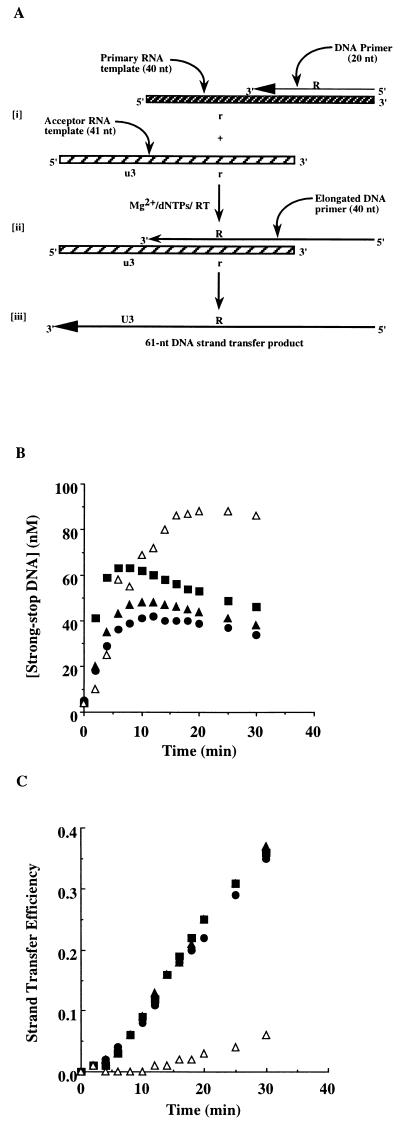Figure 3.
Strand transfer reactions catalyzed by selectively deleted RTs. (A) Schematic representation of the strand transfer assay. [i] A primer/template, comprising a 20-nt DNA and a 40-nt RNA, is incubated with RT in the presence of divalent cation and deoxynucleotides as described. [ii] This produces a 40-nt strong-stop DNA which is transferred to the acceptor template. [iii] Continued synthesis produces a 61-nt DNA strand transfer product. (B) Time course of strong-stop DNA synthesis by wild-type (•), p66/p51Δ5 (▴), p66/p51Δ9 (▪), and p66/p51Δ13 (▵) RTs. (C) Time course of the strand transfer efficiency (i.e., the concentration of 61-nt DNA relative to the sum of 40-nt and 61-nt DNAs) of wild-type (•), p66/p51Δ5 (▴), p66/p51Δ9 (▪), and p66/p51Δ13 (▵) RTs.

